Theo Adrai
Deep Optimal Transport: A Practical Algorithm for Photo-realistic Image Restoration
Jun 04, 2023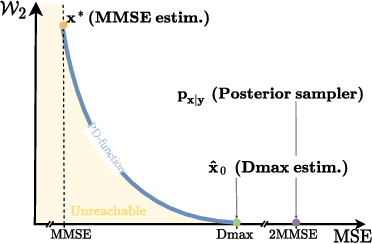
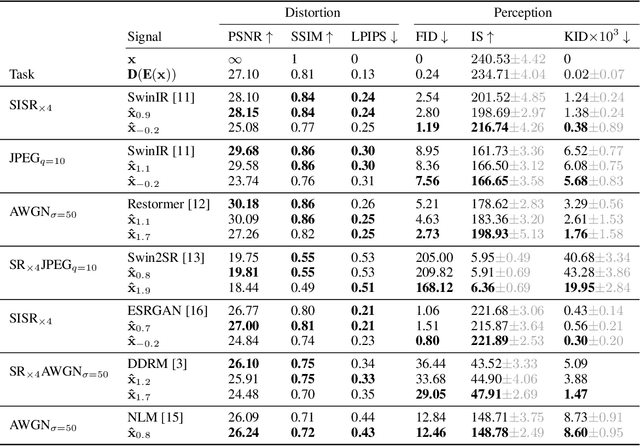
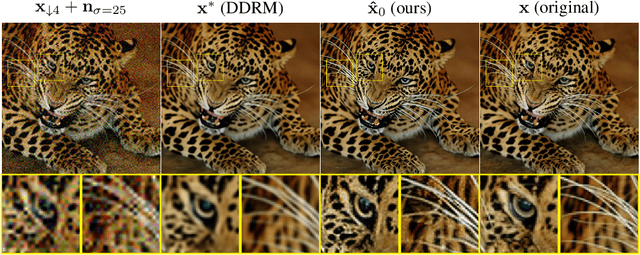
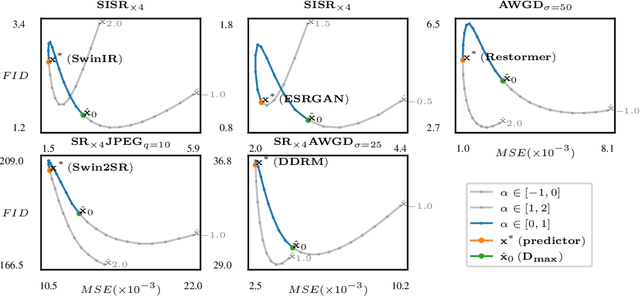
Abstract:We propose an image restoration algorithm that can control the perceptual quality and/or the mean square error (MSE) of any pre-trained model, trading one over the other at test time. Our algorithm is few-shot: Given about a dozen images restored by the model, it can significantly improve the perceptual quality and/or the MSE of the model for newly restored images without further training. Our approach is motivated by a recent theoretical result that links between the minimum MSE (MMSE) predictor and the predictor that minimizes the MSE under a perfect perceptual quality constraint. Specifically, it has been shown that the latter can be obtained by optimally transporting the output of the former, such that its distribution matches the source data. Thus, to improve the perceptual quality of a predictor that was originally trained to minimize MSE, we approximate the optimal transport by a linear transformation in the latent space of a variational auto-encoder, which we compute in closed-form using empirical means and covariances. Going beyond the theory, we find that applying the same procedure on models that were initially trained to achieve high perceptual quality, typically improves their perceptual quality even further. And by interpolating the results with the original output of the model, we can improve their MSE on the expense of perceptual quality. We illustrate our method on a variety of degradations applied to general content images of arbitrary dimensions.
High-Perceptual Quality JPEG Decoding via Posterior Sampling
Nov 21, 2022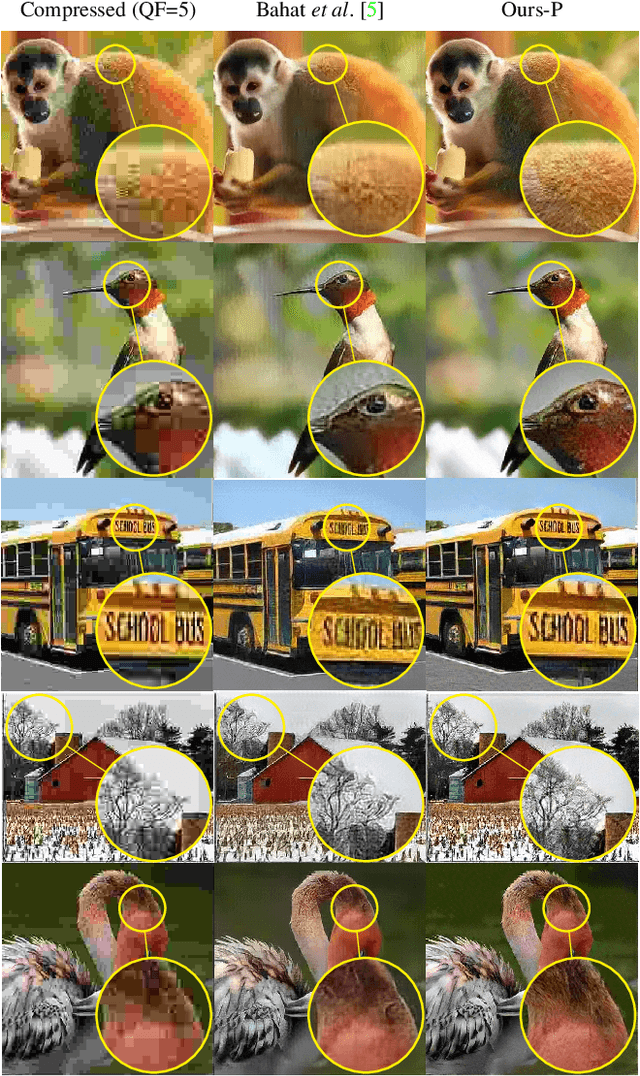
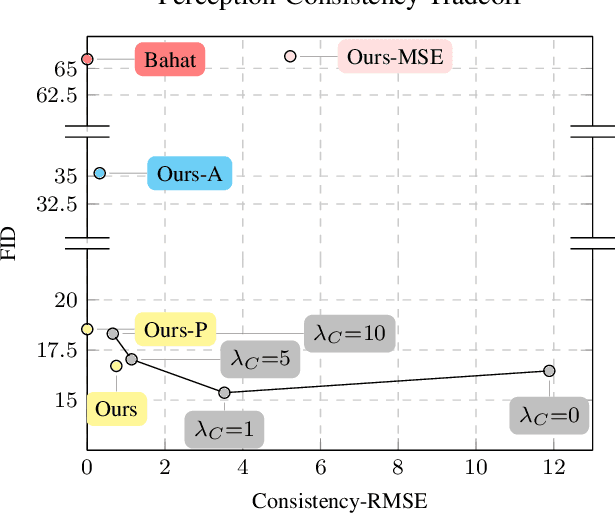


Abstract:JPEG is arguably the most popular image coding format, achieving high compression ratios via lossy quantization that may create visual artifacts degradation. Numerous attempts to remove these artifacts were conceived over the years, and common to most of these is the use of deterministic post-processing algorithms that optimize some distortion measure (e.g., PSNR, SSIM). In this paper we propose a different paradigm for JPEG artifact correction: Our method is stochastic, and the objective we target is high perceptual quality -- striving to obtain sharp, detailed and visually pleasing reconstructed images, while being consistent with the compressed input. These goals are achieved by training a stochastic conditional generator (conditioned on the compressed input), accompanied by a theoretically well-founded loss term, resulting in a sampler from the posterior distribution. Our solution offers a diverse set of plausible and fast reconstructions for a given input with perfect consistency. We demonstrate our scheme's unique properties and its superiority to a variety of alternative methods on the FFHQ and ImageNet datasets.
Reasons for the Superiority of Stochastic Estimators over Deterministic Ones: Robustness, Consistency and Perceptual Quality
Nov 17, 2022



Abstract:Stochastic restoration algorithms allow to explore the space of solutions that correspond to the degraded input. In this paper we reveal additional fundamental advantages of stochastic methods over deterministic ones, which further motivate their use. First, we prove that any restoration algorithm that attains perfect perceptual quality and whose outputs are consistent with the input must be a posterior sampler, and is thus required to be stochastic. Second, we illustrate that while deterministic restoration algorithms may attain high perceptual quality, this can be achieved only by filling up the space of all possible source images using an extremely sensitive mapping, which makes them highly vulnerable to adversarial attacks. Indeed, we show that enforcing deterministic models to be robust to such attacks profoundly hinders their perceptual quality, while robustifying stochastic models hardly influences their perceptual quality, and improves their output variability. These findings provide a motivation to foster progress in stochastic restoration methods, paving the way to better recovery algorithms.
High Perceptual Quality Image Denoising with a Posterior Sampling CGAN
Mar 17, 2021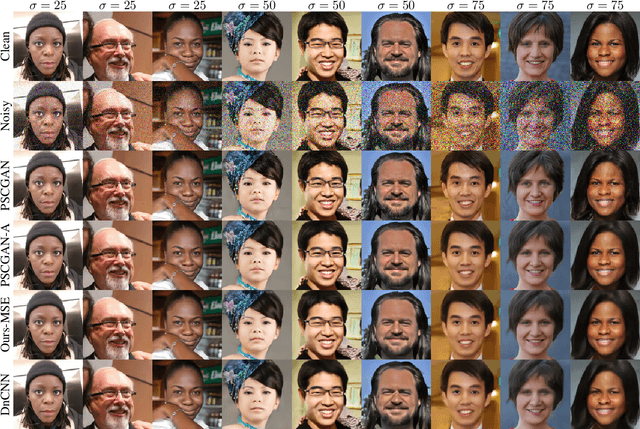
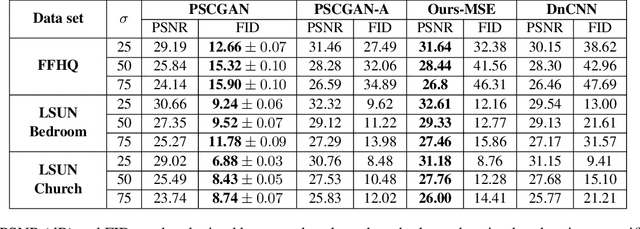
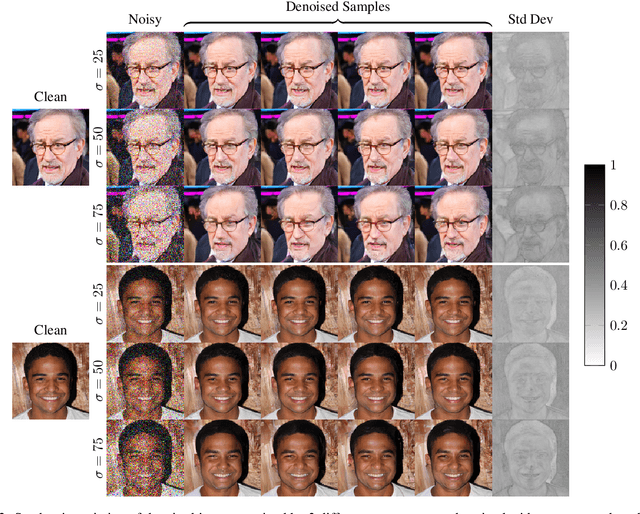
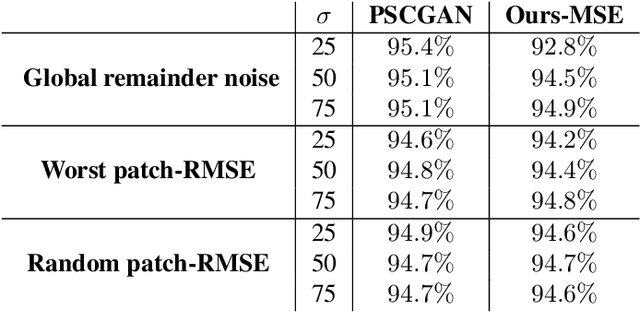
Abstract:The vast work in Deep Learning (DL) has led to a leap in image denoising research. Most DL solutions for this task have chosen to put their efforts on the denoiser's architecture while maximizing distortion performance. However, distortion driven solutions lead to blurry results with sub-optimal perceptual quality, especially in immoderate noise levels. In this paper we propose a different perspective, aiming to produce sharp and visually pleasing denoised images that are still faithful to their clean sources. Formally, our goal is to achieve high perceptual quality with acceptable distortion. This is attained by a stochastic denoiser that samples from the posterior distribution, trained as a generator in the framework of conditional generative adversarial networks (CGAN). Contrary to distortion-based regularization terms that conflict with perceptual quality, we introduce to the CGAN objective a theoretically founded penalty term that does not force a distortion requirement on individual samples, but rather on their mean. We showcase our proposed method with a novel denoiser architecture that achieves the reformed denoising goal and produces vivid and diverse outcomes in immoderate noise levels.
 Add to Chrome
Add to Chrome Add to Firefox
Add to Firefox Add to Edge
Add to Edge